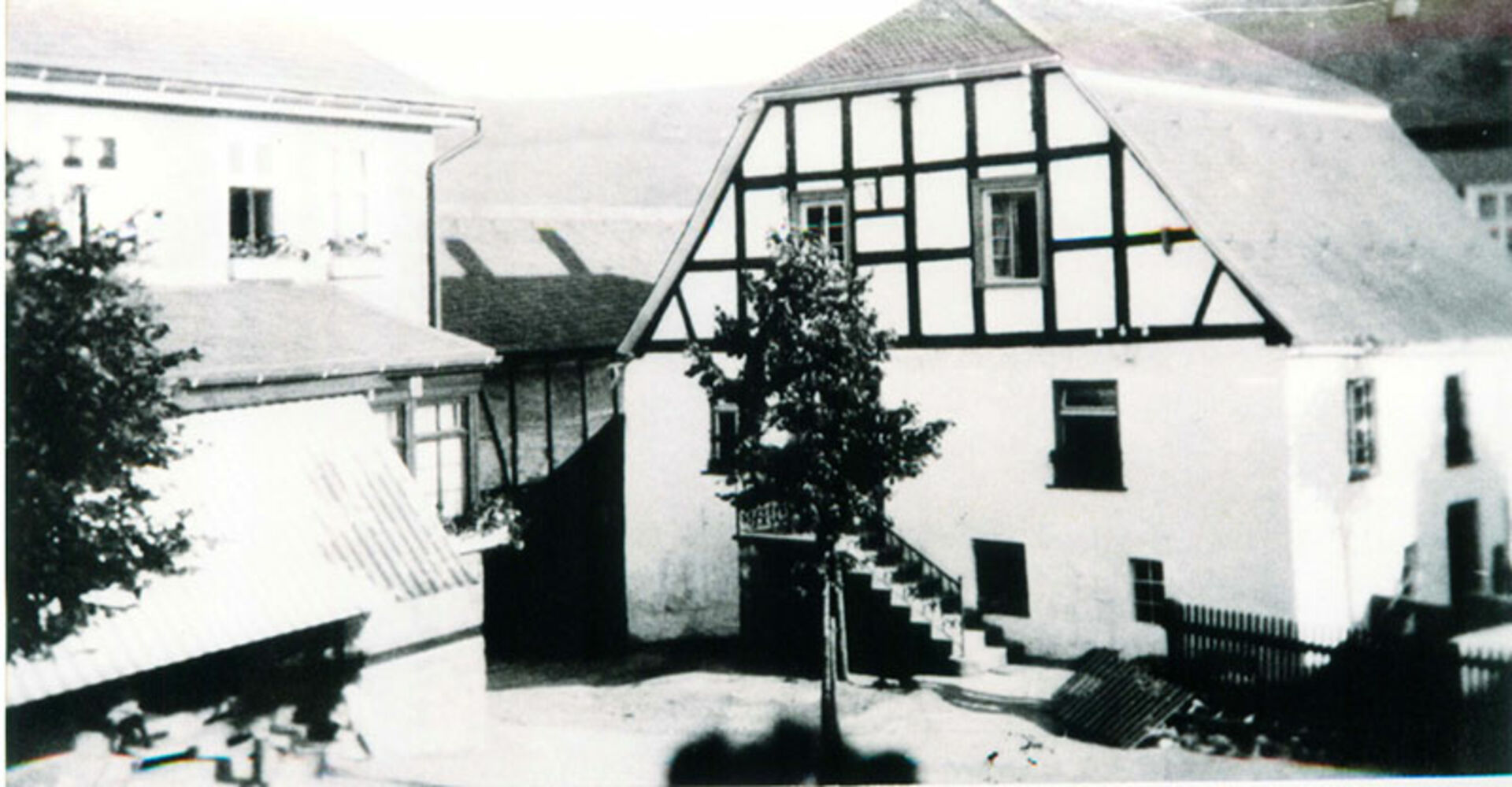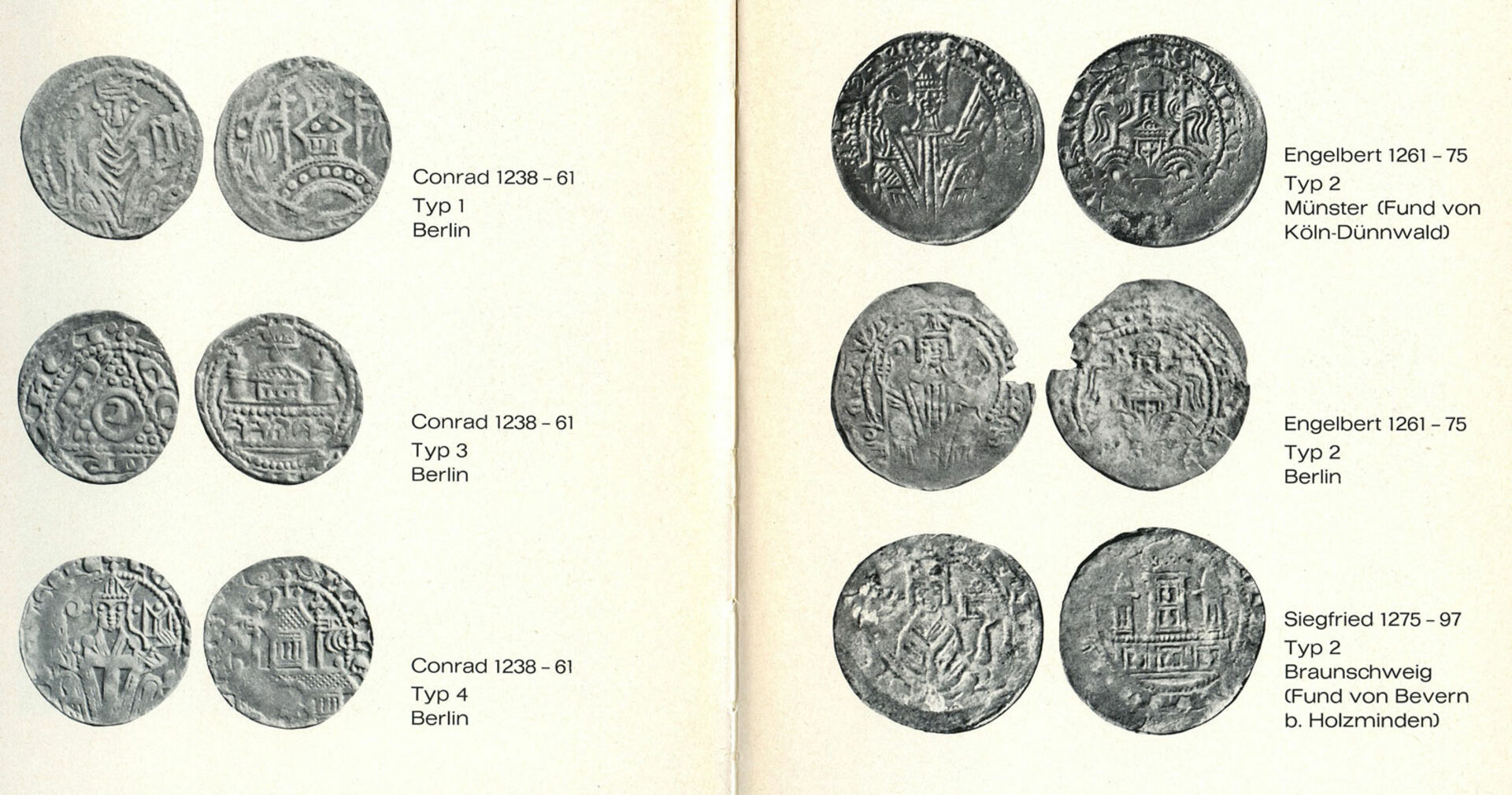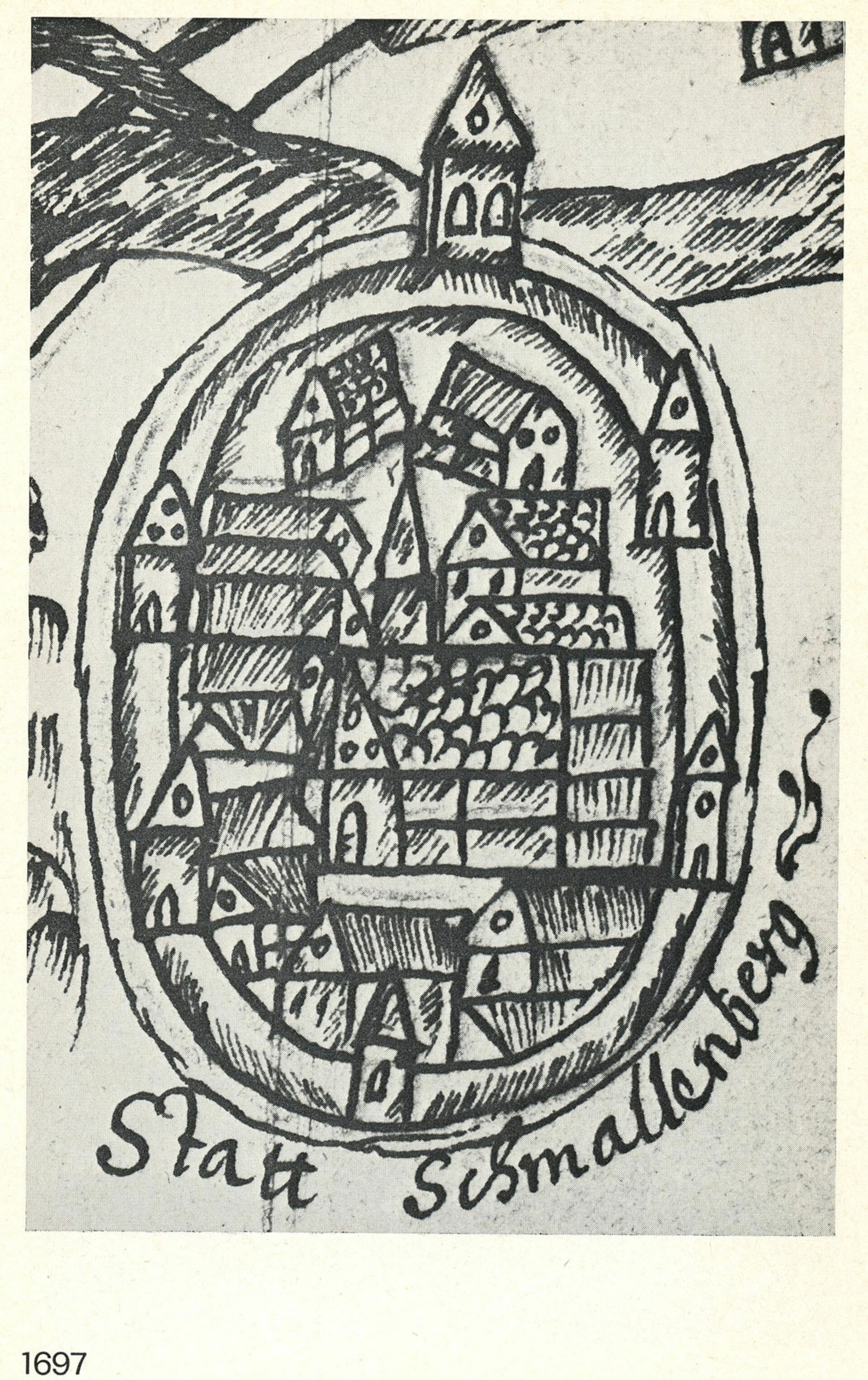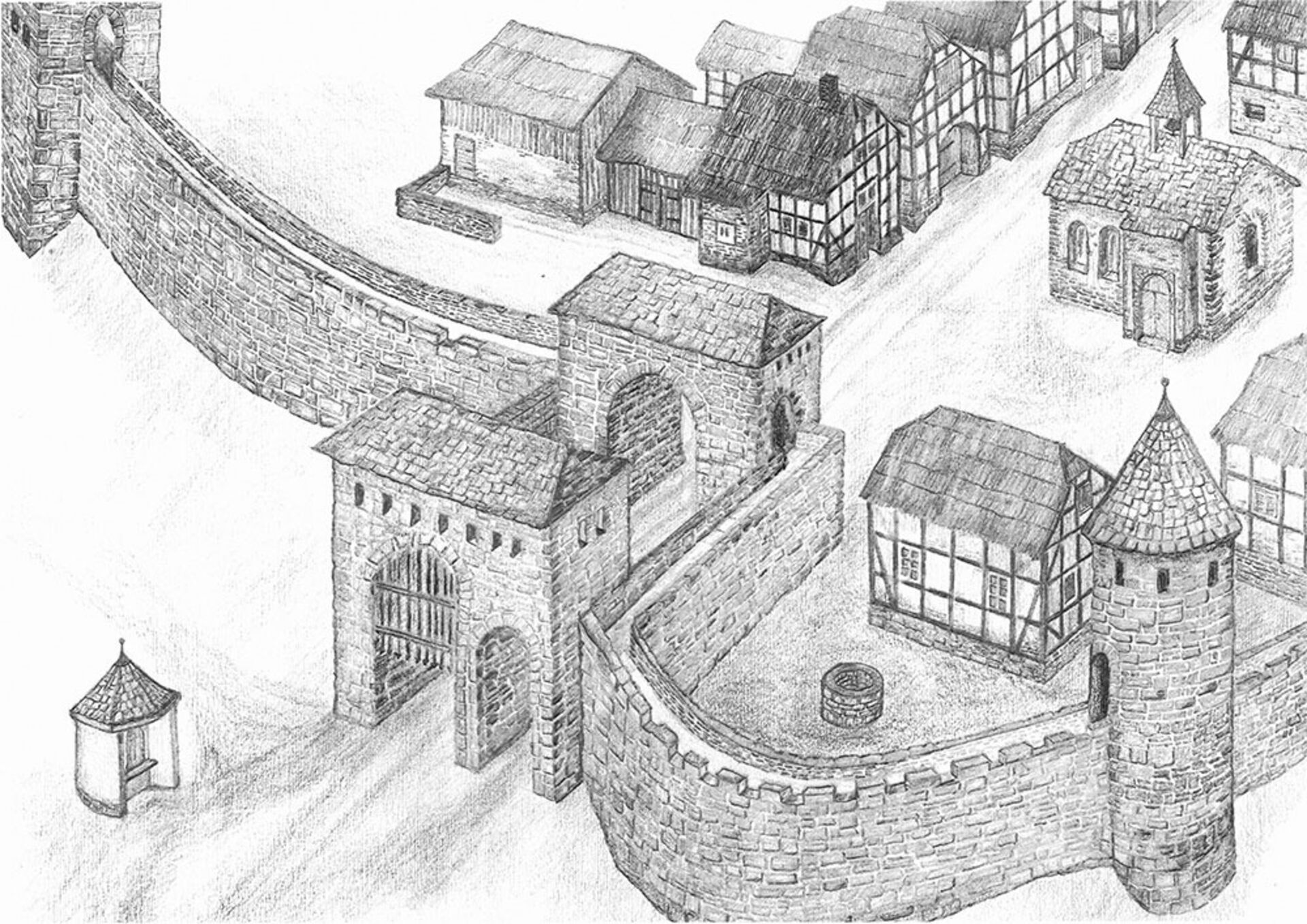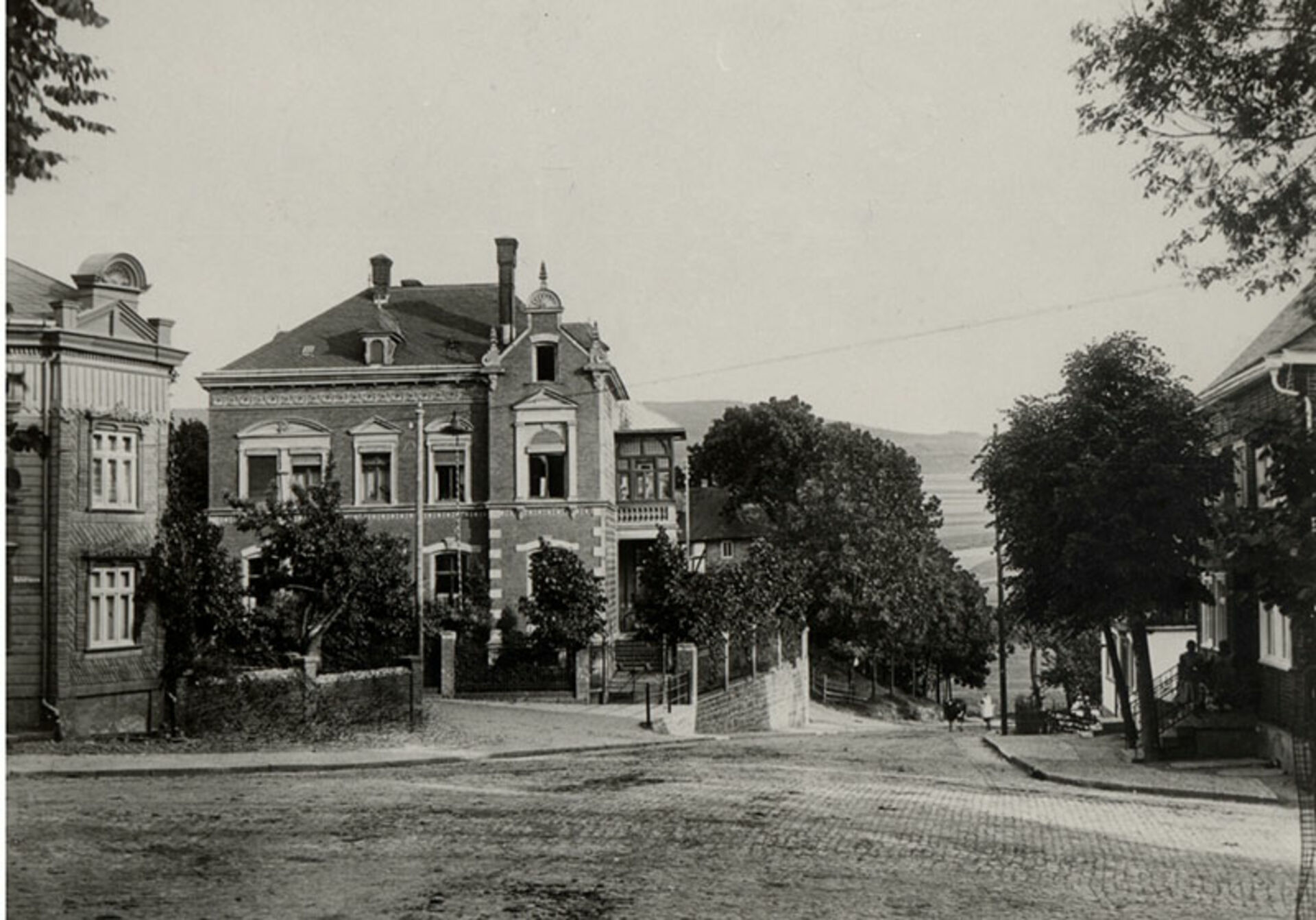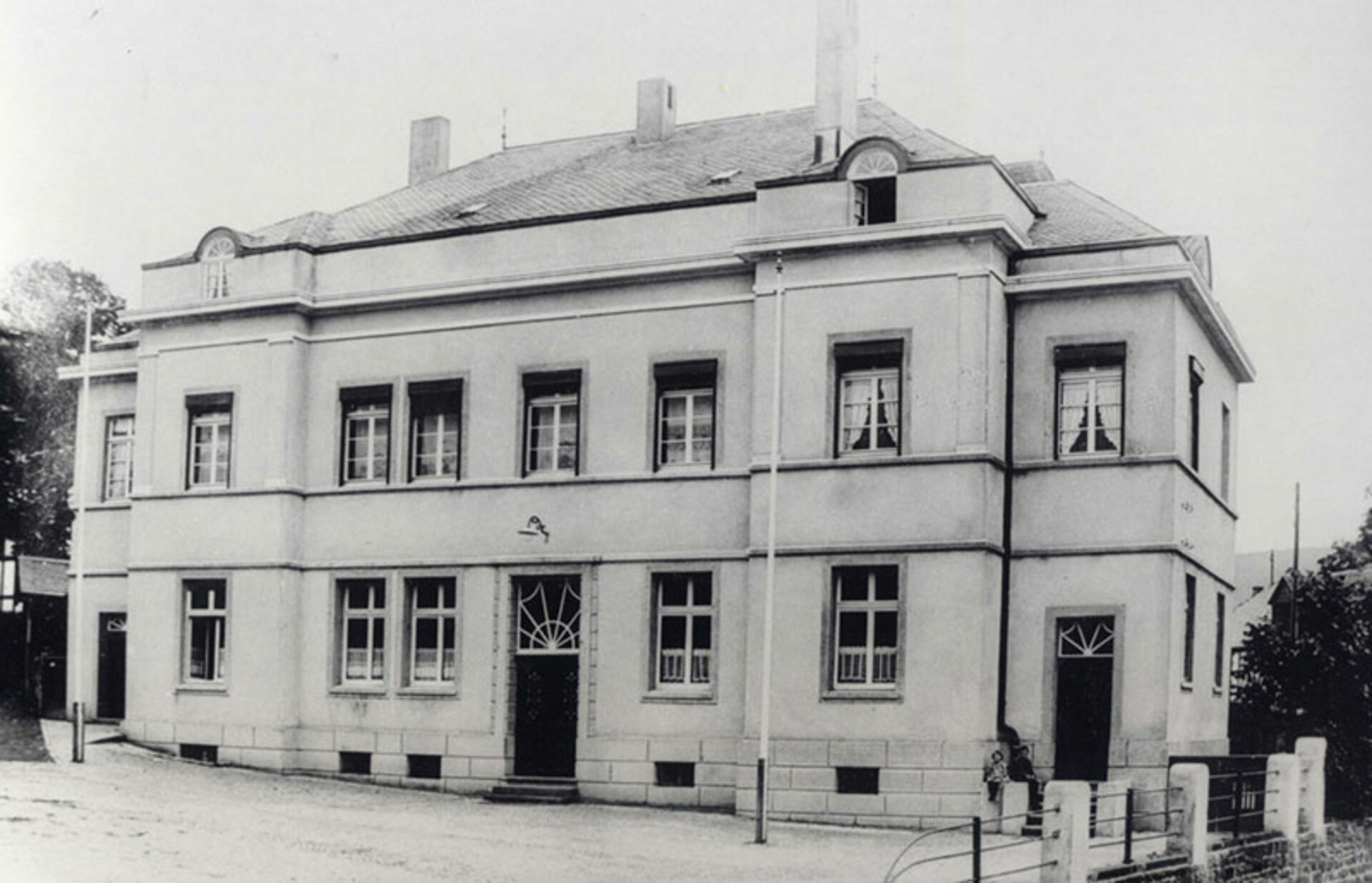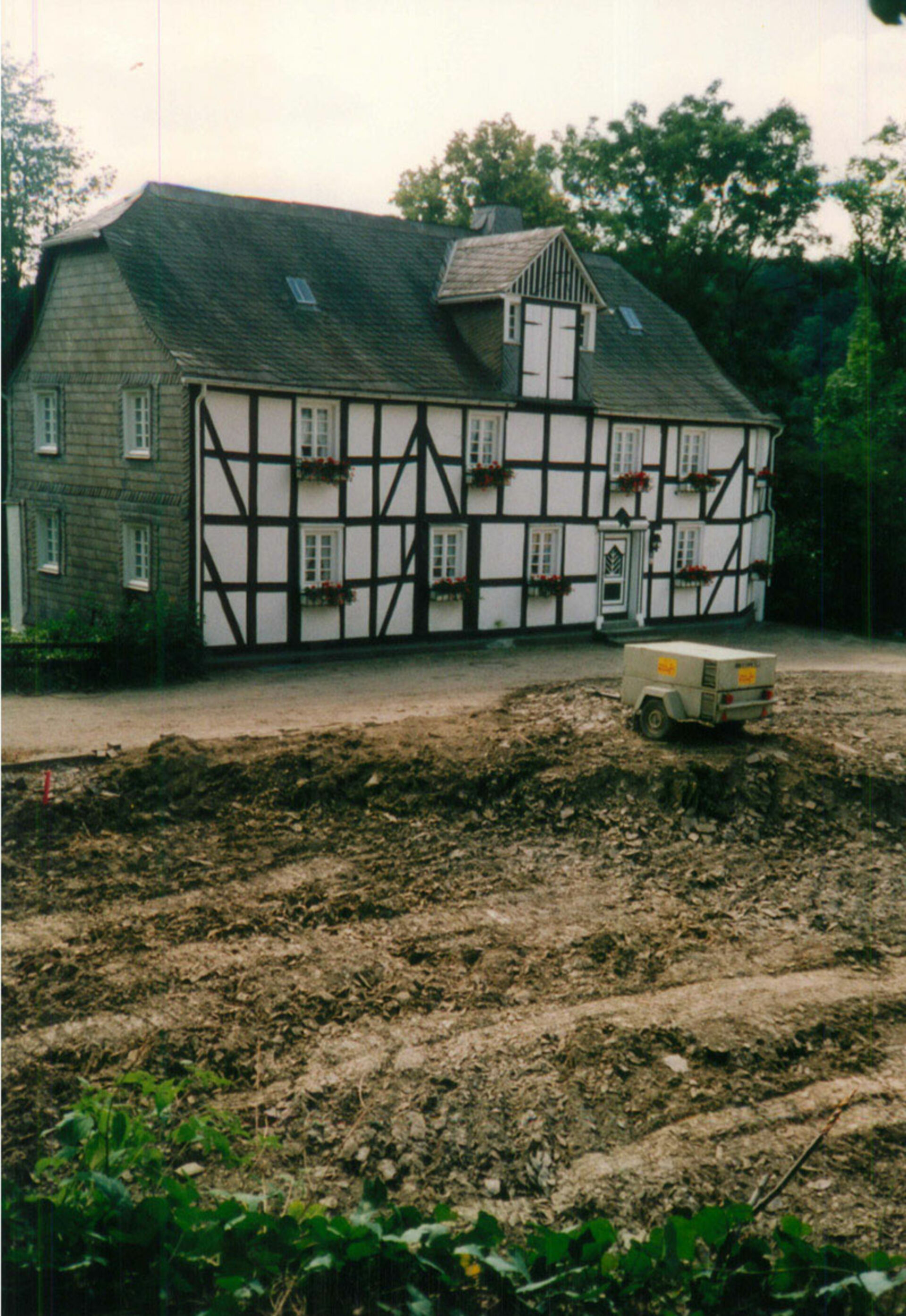Town hall
From the foundation to the large municipality
Information point:
- Unterm Werth 1: Town hall, former office building
Town, market rights and minting of coins
In 1244, the existing settlement on the "Smalen Berg" was fortified and thus elevated to the status of a town. With the fortification, it was granted market rights, its own jurisdiction and minting rights. The minting of coins in Schmallenberg probably began around 1244 under Archbishop Konrad von Hochstaden and ended around 50 years later under Archbishop Siegfried von Westerburg (died 1297). There are a total of 13 different coin types (known as Schmallenberger Pfennig) from the Schmallenberg mint. The Schmallenberger Pfennig could be used in the region and also in Arnsberg, Meschede and Brilon pay.
Municipal self-government
In the early modern period (1500-1800), the administration of the town was in the hands of a council elected by the citizens and led by the mayor and his deputy (proconsul). The council consisted of four aldermen (Senatores) and two Reckleuten (accountants or Cammerarii, chamberlains or Pfennigleute); there were also two community leaders. The mayor had judicial and police powers, represented Schmallenberg's interests at the Westphalian parliament in Arnsberg and was feudal lord over the Schmallenberg vassals. Every year on St. Kunibert's Day (November 12), the head of the town was newly elected by the council and two guild masters. In 1437, the Archbishop of Cologne granted the town the right to dispense justice within the town boundaries, which meant greater judicial independence for the town. Court hearings also took place in the town hall.
Sovereigns
Since its foundation, the city Schmallenberg was under the rule of the Electorate of Cologne and the Bishop of Cologne as part of the Duchy of Westfalen until 1803. In 1803, the city became part of the Landgraviate Hessen-Darmstadt as a result of the Reichsdeputationshauptschluss (which, among other things, stipulated the dissolution of the ecclesiastical principalities). In 1811/12, the Landgrave of Hessen-Darmstadt abolished the old town constitution, the exercise of jurisdiction and feudal law. The town wall and town gates were also demolished at this time. In 1815 Schmallenberg became part of Prussia with the Duchy of Westfalen.
With the introduction of the first Landgemeindeordnung for the province of Westfalen in 1841, the Amt Schmallenberg and the town Schmallenberg became the seat of the district. The revolutionary year of 1848 passed Schmallenberg quietly, as - according to previous historiography - a "capable Landwehr" had formed. As the eighth deputy from Westfalen, Karl Dham from Schmallenberg (later a court councillor in Brilon) was sent to the National Assembly in Frankfurt.
In 1894, master builder Sander from Hagen was commissioned to build the current office building. Completed and occupied in 1897, it was enlarged during the First World War, in 1922 and in 1993/94. Today known as the town hall, it is the workplace of the mayor and town administration. Since 1985/86, the town archives have been located in the narrow house behind the town hall.
Carl Johann Ludwig Dham was born as the son of the doctor Clemens Ludwig Dham on 27.08.1809 in Schmallenberg and studied law in Bonn, Greifswald and Heidelberg from 1830-1833. During his studies, he was a member of several politically liberal fraternities. After completing his studies, he worked at the court in Arnsberg. Due to his membership of the then oppositional fraternity movement, his participation in the Hambach Festival (which took place in 1832 and was regarded as the high point of bourgeois opposition to the restorative policies of the German states) and his democratic statements, he was prosecuted for high treason in 1833. Dham served a prison sentence in Magdeburg from 1833 to 1840. After his release from prison in 1940, Dham worked again at courts in Marsberg, Brilon and Arnsberg. From 1848, he was a district judge and lawyer in Brilonfrom 1866 until his death in 1871 in Paderborn.
During the revolution of 1848/49, Dham was elected to the National Assembly for the constituency of Magdeburg. Meschede He campaigned for the creation of a parliamentary monarchy with strong representation of the people and was one of those who supported a small German solution and elected Frederick William IV as Emperor of the Germans (who, as is well known, did not accept the election and thus brought the revolution to a standstill).


